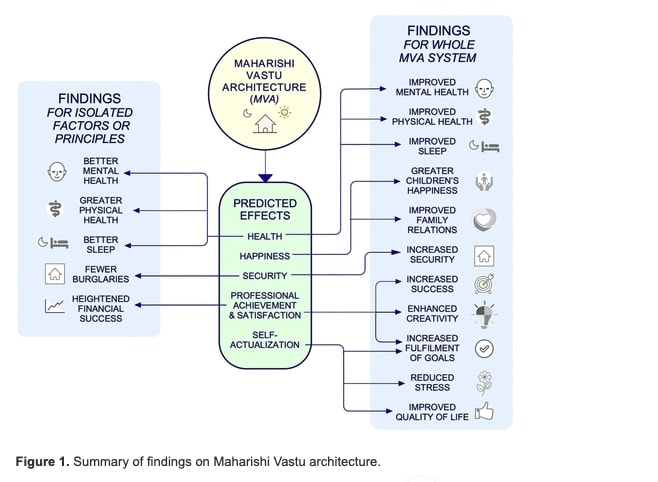
Abstract
Background and objectives
The evolution of healthcare from 18th-century reductionism to 21st-century postgenomic holism has been described in terms of systems medicine, and the impact of the built environment on human health is the focus of investigation and development, leading to the new specialty of evidence-based, therapeutic architecture. The traditional system of Vāstu architecture—a design paradigm for buildings which is proposed to promote mental and physical health—has been applied and studied in the West in the last 20 years, and features elements absent from other approaches. This review critically evaluates the theory and research of a well-developed, standardized form of Vāstu—Maharishi Vastu® architecture (MVA). MVA’s principles include development of the architect’s consciousness, universal recommendations for building orientation, siting, and dimensions; placement of key functions; and occupants’ head direction when sleeping or performing tasks. The effects of isolated Vāstu elements included in MVA are presented. However, the full value of MVA, documented as a systematic, globally applicable practice, is in the effect of its complete package, and thus this review of MVA includes evaluating the experience of living and […]












Stephan,
Thank you for this gem. Fascinating.